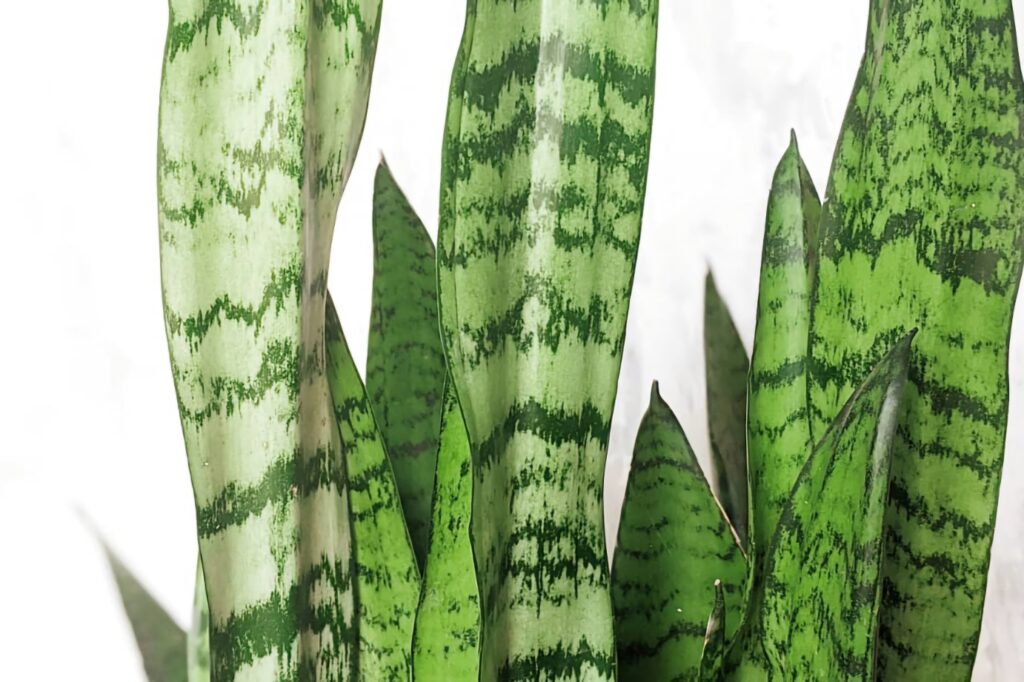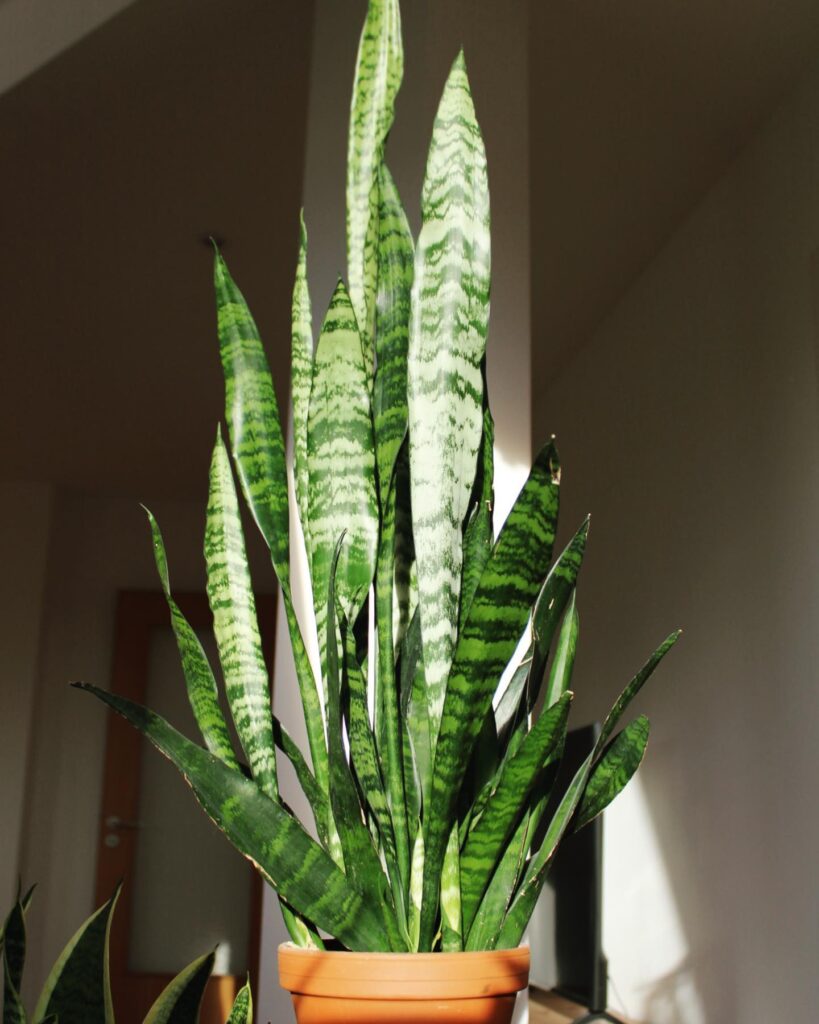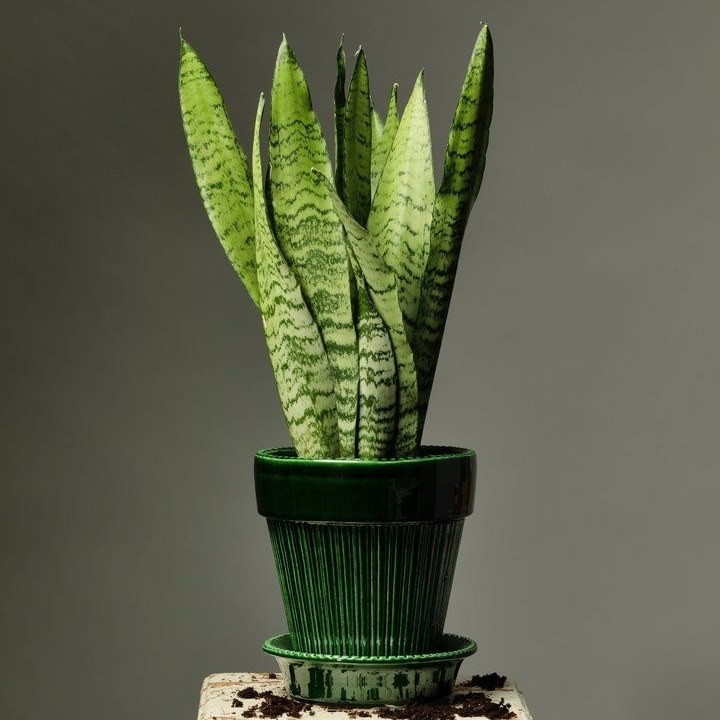How to Grow and Care for Sansevieria Zeylanica
The snake plant (Sansevieria zeylanica) is a popular, low-maintenance succulent. This guide covers growing conditions, potting, watering, and solving common issues to keep your striped-leaf beauty thriving indoors. The easy-care snake plant makes a great addition to any home or office!

Contents
Light Requirements
For ideal growth, Sansevieria zeylanica thrives in bright, indirect light. You’ll find it adapts well to various lighting conditions, making it perfect for nurturing in different areas of your home or office. While it can tolerate low light, you’ll notice slower growth and less vibrant foliage. To serve your plant best, place it near a north-facing window or a few feet away from east or west-facing windows.
If you’re caring for someone else’s Sansevieria, be mindful of direct sunlight exposure. Too much can scorch the leaves, causing irreversible damage. In outdoor settings, provide partial shade to protect the plant. Remember, Sansevieria zeylanica’s adaptability doesn’t mean neglect; regularly assess its light conditions to guarantee ideal health. By understanding and meeting its light requirements, you’ll cultivate a thriving, low-maintenance plant that purifies the air for those around you.
Watering and Humidity

When it comes to watering Sansevieria zeylanica, less is more. These hardy plants are drought-tolerant and prefer to dry out between waterings. Water your Sansevieria thoroughly, but only when the soil feels completely dry to the touch. In most cases, this means watering every 2-3 weeks during the growing season and even less frequently during winter.
Overwatering is the most common mistake with these plants, so err on the side of underwatering. Signs of overwatering include yellowing leaves and root rot. If you’re unsure, it’s better to wait an extra day before watering.
Sansevieria zeylanica doesn’t require high humidity, thriving in average household conditions. However, if you live in an arid climate, you can mist the leaves occasionally to remove dust and provide a slight humidity boost. Remember, these resilient plants are forgiving and will reward your minimal care with long-lasting beauty.
Soil and Potting
The right soil mix is essential for Sansevieria zeylanica’s health and growth. Use a well-draining potting mix designed for succulents or create your own by combining equal parts potting soil, coarse sand, and perlite. This mixture guarantees proper aeration and prevents waterlogging, which can lead to root rot.
When potting your Sansevieria zeylanica, choose a container with drainage holes to allow excess water to escape. Select a pot that’s only slightly larger than the plant’s root system, as these plants prefer to be somewhat rootbound. Repot your snake plant every 2-3 years or when it outgrows its current container. During repotting, gently remove the plant from its pot, shake off excess soil, and inspect the roots for any signs of disease. Trim any damaged roots before replanting in fresh soil.
Temperature and Climate
Sansevieria zeylanica thrives in a wide range of temperatures, making it an adaptable houseplant for various climates. You’ll find it grows best in temperatures between 60°F and 80°F (15°C to 27°C). However, it can tolerate brief exposure to temperatures as low as 50°F (10°C) and as high as 90°F (32°C).
This hardy plant doesn’t require high humidity, which makes it ideal for indoor environments. It’s well-suited for homes and offices with air conditioning or heating. To maintain ideal growth, keep your Sansevieria zeylanica away from cold drafts and heat sources like radiators or air vents. If you’re growing it outdoors, safeguard it from frost and extreme heat. In colder regions, bring the plant indoors during winter to prevent damage from freezing temperatures. By providing a stable environment, you’ll help your Sansevieria zeylanica flourish and serve as a long-lasting, low-maintenance addition to your space.
Fertilizing and Nutrition

Although Sansevieria zeylanica is known for its low-maintenance nature, providing proper nutrition can enhance its growth and overall health. You don’t need to fertilize your plant frequently, but when you do, use a balanced, water-soluble fertilizer diluted to half-strength. Apply it once every 2-3 months during the growing season (spring and summer). In fall and winter, reduce fertilization to once every 3-4 months or stop altogether. Be careful not to over-fertilize, as this can lead to leaf burn and root damage. If you notice yellowing leaves or stunted growth, it may be a sign of nutrient deficiency. In this case, consider using a slow-release fertilizer or supplementing with a mild, organic option like compost tea. Remember, less is more when it comes to fertilizing Sansevieria zeylanica.
Propagation Methods
For those looking to expand their Sansevieria zeylanica collection, propagation offers an excellent way to create new plants. You can choose between two main methods: leaf cuttings or division. For leaf cuttings, select a healthy leaf and cut it into 2-3 inch sections. Allow the cuts to callus for a day, then plant them vertically in well-draining soil. Keep the soil slightly moist until roots develop.
Division is ideal for mature plants with multiple shoots. Gently remove the plant from its pot and separate the shoots, ensuring each has roots attached. Repot the divisions in fresh soil. Both methods require patience, as Sansevieria zeylanica grows slowly. Provide indirect light and maintain moderate humidity during propagation. With care, you’ll soon have new plants to share with fellow plant enthusiasts or use to enhance your indoor greenery.
Common Pests and Diseases
Plant health champions will be pleased to know that Sansevieria zeylanica is generally resistant to most pests and diseases. However, you should still be vigilant and watch for common issues that can affect your plant. Mealybugs and spider mites are the most likely pests you’ll encounter. If you spot these tiny invaders, treat them promptly with insecticidal soap or neem oil.
Root rot is the primary disease concern for Sansevieria zeylanica. It’s usually caused by overwatering or poor drainage. To prevent this, guarantee your plant’s soil is well-draining and allow it to dry out between waterings. If you notice soft, mushy roots or a foul odor, you’ll need to remove affected parts and repot in fresh, dry soil. By staying attentive and addressing issues quickly, you’ll help your Sansevieria zeylanica thrive and continue to beautify your space.
